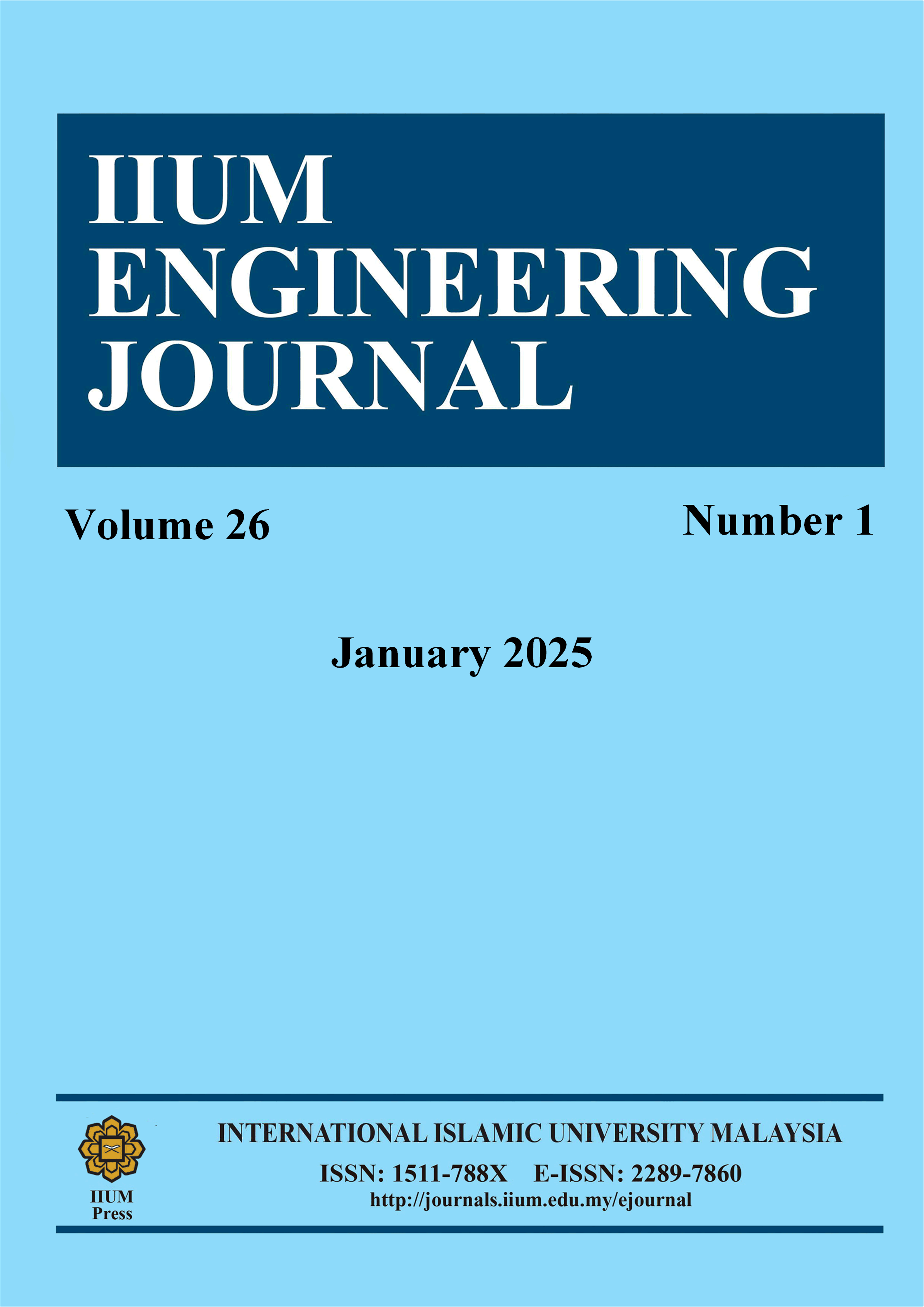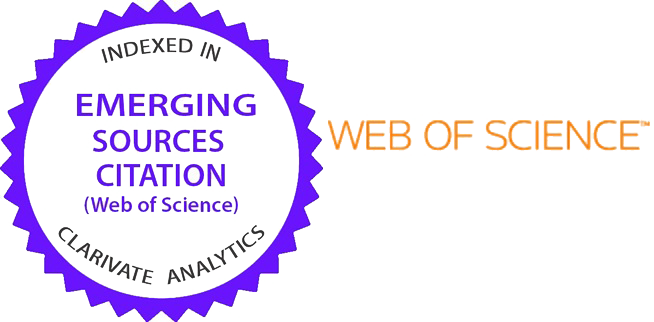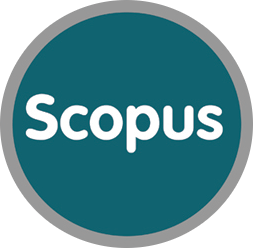Electrochemical Sensing of Nicotine Using Laser-Induced Graphene Screen-Printed Electrode
DOI:
https://doi.org/10.31436/iiumej.v26i1.3392Keywords:
laser-induced graphene, screen-printed electrode, nicotine, electrochemicalAbstract
Nicotine is one of the major addictive substances in tobacco plants, which caused a global pandemic. Rapid detection of nicotine is crucial to allow quick identification of harmful substances that will cause significant health risks, especially with the recent rise in electronic cigarettes. Since smoking cessation programs are typically limited to screening, awareness, consultation, medication, and follow-up activities, there is a need for a device to check the nicotine level in former smokers at the end of the programs. However, most of the current nicotine detection is based on chromatography technology, which involves complicated sample pre-treatment and bulky and expensive instruments. Thus, screen-printing technology employing electrochemical detection is a promising solution as it offers a simple and portable setup for nicotine detection. Yet, conventional screen-printed electrodes (SPE) have relatively low sensitivity and need modification to improve the electrode material. Therefore, this work aims to investigate the performance of laser-induced graphene (LIG) as SPE-modified electrodes to detect the presence of nicotine through electrochemical measurements. A finite element simulation was conducted to investigate laser power's effect on the induced graphene's quality. The CO2 laser with 3W laser power, Dots per inch (DPI) of 1200, and a laser speed of 13% was used to fabricate the LIG sensor on a Kapton substrate. Material characterizations such as SEM, EDX, and Raman spectra were performed on the fabricated LIG-SPE to confirm the presence of LIG. Cyclic voltammetry (CV) measurement was done using 0.1M [Fe (CN)6]3-/4- and 0.1M KCL to find the suitable scan rates. At a fixed scan rate of 50 mV/s, the sensor's performance was analyzed using 0.1M of nicotine with 3 different phosphate buffer solutions (PBS) of pH 5, pH 7, and pH 9 at different nicotine concentrations. Nicotine with PBS pH 5 solution was found to be the optimum measured solution, with the value obtained for R² having the highest value of 0.9988 and the lowest LOD of 4.2183 ?M. The proposed electrochemical sensing of nicotine using a laser-induced graphene screen printed electrode can detect nicotine with high linearity at different pH levels of PBS buffer solution.
ABSTRAK: Nikotin adalah salah satu bahan ketagihan utama dalam tumbuhan tembakau yang menyebabkan pandemik global. Pengesanan cepat nikotin adalah penting bagi membolehkan pengecaman cepat bahan merbahaya yang menyebabkan risiko kesihatan ketara terutamanya dengan peningkatan rokok elektronik pada masa sekarang. Memandangkan program berhenti merokok biasanya terhad kepada pemeriksaan, kesedaran, perundingan, ubat-ubatan dan aktiviti susulan, terdapat keperluan bagi peranti memeriksa tahap nikotin dalam bekas perokok pada akhir program. Walau bagaimanapun, kebanyakan pengesanan nikotin semasa adalah berdasarkan teknologi kromatografi, di mana melibatkan sampel pra-rawatan rumit, instrumen besar dan mahal. Oleh itu, teknologi percetakan skrin yang menggunakan pengesanan eletrokimia adalah penyelesaian bermakna kerana ia menawarkan persediaan mudah dan mudah alih bagi mengesan nikotin. Namun, skrin-cetakan elektrod konvensional (SPE) mempunyai sensitiviti rendah dan memerlukan pengubahsuaian bagi menambah baik bahan elektrod. Oleh itu, kajian ini adalah untuk menyiasat prestasi laser graphen teraruh (LIG) sebagai elektrod SPE yang diubah suai bagi mengesan kehadiran nikotin melalui pengukuran elektrokimia. Simulasi unsur terhingga telah dijalankan bagi melihat kesan kuasa laser ke atas kualiti graphen teraruh. Laser CO? dengan kuasa laser 3W, dot per inci (DPI) sebanyak 1200, dan kelajuan laser sehingga 13% telah digunakan bagi mengfabrikasi pengimbas LIG pada substrat Kapton. Pencirian bahan sperti SEM, EDX, dan spektrum Raman dilakukan pada LIG-SPE yang direka bagi mengesahkan kehadiran LIG. Pengukuran voltametri kitaran (CV) dilakukan menggunakan 0.1M [Fe (CN)6]3-/4- dan 0.1M KCL bagi mencari kadar imbasan yang sesuai. Pada kadar imbasan tetap 50 mV/s, prestasi pengimbas dianalisa menggunakan 0.1M nikotin dengan 3 larutan penimbal fosfat (PBS) berbeza pH 5, pH 7, dan pH 9 pada kepekatan nikotin berbeza. Nikotin dengan larutan PBS pH 5 didapati sebagai larutan optimum, dengan nilai R² tertinggi 0.9988 dan LOD terendah 4.2183 ?M. Kesimpulannya, pengimbas elektrokimia nikotin menggunakan laser elektrod skrin bercetak graphen teraruh dapat mengesan nikotin dengan pemalaran tinggi pada pH larutan penimbal PBS yang berbeza.
Downloads
Metrics
References
A. García-Miranda Ferrari, S. J. Rowley-Neale, and C. E. Banks, "Screen-printed electrodes: Transitioning the laboratory in-to-the field," Aug. 01, 2021, Elsevier B.V. doi: 10.1016/j.talo.2021.100032. DOI: https://doi.org/10.1016/j.talo.2021.100032
E. Mehmeti, T. Kilic, C. Laur, and S. Carrara, "Electrochemical determination of nicotine in smokers' sweat," Microchemical Journal, vol. 158, p. 105155, Nov. 2020, doi: 10.1016/J.MICROC.2020.105155. DOI: https://doi.org/10.1016/j.microc.2020.105155
A. Hayat and J. L. Marty, "Disposable screen printed electrochemical sensors: Tools for environmental monitoring," Jun. 13, 2014, MDPI AG. doi: 10.3390/s140610432. DOI: https://doi.org/10.3390/s140610432
Z. Taleat, A. Khoshroo, and M. Mazloum-Ardakani, "Screen-printed electrodes for biosensing: A review (2008-2013)," 2014, Springer-Verlag Wien. doi: 10.1007/s00604-014-1181-1. DOI: https://doi.org/10.1007/s00604-014-1181-1
A. V. Shokurov and C. Menon, "Laser-Induced Graphene Electrodes for Electrochemistry Education and Research," J Chem Educ, Jun. 2022, doi: 10.1021/acs.jchemed.2c01237. DOI: https://doi.org/10.1021/acs.jchemed.2c01237
S. Michalkiewicz, A. Skorupa, and M. Jakubczyk, "Carbon Materials in Electroanalysis of Preservatives: A Review.," Materials (Basel), vol. 14, no. 24, Dec. 2021, doi: 10.3390/ma14247630. DOI: https://doi.org/10.3390/ma14247630
M. Zamani, C. M. Klapperich, and A. L. Furst, "Recent advances in gold electrode fabrication for low-resource setting biosensing.," Lab Chip, vol. 23, no. 5, pp. 1410–1419, Mar. 2023, doi: 10.1039/d2lc00552b. DOI: https://doi.org/10.1039/D2LC00552B
J. Edgington, A. Deberghes, and L. C. Seitz, "Glassy Carbon Substrate Oxidation Effects on Electrode Stability for Oxygen Evolution Reaction Catalysis Stability Benchmarking," ACS Appl Energy Mater, vol. 5, no. 10, pp. 12206–12218, Oct. 2022, doi: 10.1021/acsaem.2c01690. DOI: https://doi.org/10.1021/acsaem.2c01690
J. Lin et al., "Laser-induced porous graphene films from commercial polymers," Nat Commun, vol. 5, 2014, doi: 10.1038/ncomms6714. DOI: https://doi.org/10.1038/ncomms6714
L. Huang, J. Su, Y. Song, and R. Ye, "Laser-Induced Graphene: En Route to Smart Sensing," Aug. 01, 2020, Springer. doi: 10.1007/s40820-020-00496-0. DOI: https://doi.org/10.1007/s40820-020-00496-0
A. R. Cardoso et al., "Molecularly-imprinted chloramphenicol sensor with laser-induced graphene electrodes," Biosens Bioelectron, vol. 124–125, pp. 167–175, Jan. 2019, doi: 10.1016/j.bios.2018.10.015. DOI: https://doi.org/10.1016/j.bios.2018.10.015
F. M. Vivaldi et al., "Three-Dimensional (3D) Laser-Induced Graphene: Structure, Properties, and Application to Chemical Sensing," Jul. 07, 2021, American Chemical Society. doi: 10.1021/acsami.1c05614. DOI: https://doi.org/10.1021/acsami.1c05614
K. Y. Lau and J. Qiu, "Broad applications of sensors based on laser-scribed graphene," Light Sci Appl, vol. 12, no. 1, p. 168, Jul. 2023, doi: 10.1038/s41377-023-01210-6. DOI: https://doi.org/10.1038/s41377-023-01210-6
Y. Guo, C. Zhang, Y. Chen, and Z. Nie, "Research Progress on the Preparation and Applications of Laser-Induced Graphene Technology.," Nanomaterials (Basel), vol. 12, no. 14, Jul. 2022, doi: 10.3390/nano12142336. DOI: https://doi.org/10.3390/nano12142336
G. Bhattacharya et al., "Disposable Paper-Based Biosensors: Optimizing the Electrochemical Properties of Laser-Induced Graphene," ACS Appl Mater Interfaces, vol. 14, no. 27, pp. 31109–31120, Jul. 2022, doi: 10.1021/acsami.2c06350. DOI: https://doi.org/10.1021/acsami.2c06350
Z. Wan, N. T. Nguyen, Y. Gao, and Q. Li, "Laser induced graphene for biosensors," Sep. 01, 2020, Elsevier B.V. doi: 10.1016/j.susmat.2020.e00205. DOI: https://doi.org/10.1016/j.susmat.2020.e00205
N. Dixit and S. P. Singh, "Laser-Induced Graphene (LIG) as a Smart and Sustainable Material to Restrain Pandemics and Endemics: A Perspective," ACS Omega, vol. 7, no. 6, pp. 5112–5130, Feb. 2022, doi: 10.1021/acsomega.1c06093. DOI: https://doi.org/10.1021/acsomega.1c06093
A. Velasco, Y. K. Ryu, A. Hamada, A. de Andrés, F. Calle, and J. Martinez, “Laser-Induced Graphene Microsupercapacitors: Structure, Quality, and Performance,” Nanomaterials, vol. 13, no. 5, Mar. 2023, doi: 10.3390/nano13050788. DOI: https://doi.org/10.3390/nano13050788
W. Ma, J. Zhu, Z. Wang, W. Song, and G. Cao, "Recent advances in preparation and application of laser-induced graphene in energy storage devices," Dec. 01, 2020, Elsevier Ltd. doi: 10.1016/j.mtener.2020.100569. DOI: https://doi.org/10.1016/j.mtener.2020.100569
R. Ye, D. K. James, and J. M. Tour, "Laser-Induced Graphene: From Discovery to Translation," Jan. 04, 2019, Wiley-VCH Verlag. doi: 10.1002/adma.201803621. DOI: https://doi.org/10.1002/adma.201803621
R. Ye, D. K. James, and J. M. Tour, "Laser-Induced Graphene," Acc Chem Res, vol. 51, no. 7, pp. 1609–1620, Jul. 2018, doi: 10.1021/acs.accounts.8b00084. DOI: https://doi.org/10.1021/acs.accounts.8b00084
M. Fan et al., "CO2 Laser-Induced Graphene with an Appropriate Oxygen Species as an Efficient Electrocatalyst for Hydrogen Peroxide Synthesis," Chemistry, vol. 28, no. 60, Oct. 2022, doi: 10.1002/CHEM.202201996. DOI: https://doi.org/10.1002/chem.202201996
T. Pinheiro et al., "Influence of CO2 laser beam modelling on electronic and electrochemical properties of paper-based laser-induced graphene for disposable pH electrochemical sensors," Carbon Trends, vol. 11, Jun. 2023, doi: 10.1016/j.cartre.2023.100271. DOI: https://doi.org/10.1016/j.cartre.2023.100271
A. Behrent, C. Griesche, P. Sippel, and A. J. Baeumner, "Process-property correlations in laser-induced graphene electrodes for electrochemical sensing," Microchimica Acta, vol. 188, no. 5, May 2021, doi: 10.1007/s00604-021-04792-3.
M. Liu, J. N. Wu, and H. Y. Cheng, "Effects of laser processing parameters on properties of laser-induced graphene by irradiating CO2 laser on polyimide," Sci China Technol Sci, vol. 65, no. 1, pp. 41–52, Jan. 2022, doi: 10.1007/s11431-021-1918-8. DOI: https://doi.org/10.1007/s11431-021-1918-8
A. Behrent, C. Griesche, P. Sippel, and A. J. Baeumner, "Process-property correlations in laser-induced graphene electrodes for electrochemical sensing," Microchimica Acta, vol. 188, no. 5, May 2021, doi: 10.1007/s00604-021-04792-3. DOI: https://doi.org/10.1007/s00604-021-04792-3
Y. Il Kim, M. K. Ro, U. Y. Paek, M. K. Sok, and H. Pak, "Maximum Temperature Determination for Stable Operation of Direct-Write Laser-Induced Graphene Heater on Exposed Polyimide Substrate through Numerical Simulation." [Online]. Available: https://ssrn.com/abstract=4254595
J. H. Han, S. Hyun Park, S. Kim, and J. Jungho Pak, "A performance improvement of enzyme-based electrochemical lactate sensor fabricated by electroplating novel PdCu mediator on a laser induced graphene electrode," Bioelectrochemistry, vol. 148, Dec. 2022, doi: 10.1016/j.bioelechem.2022.108259. DOI: https://doi.org/10.1016/j.bioelechem.2022.108259
N. Elgrishi, K. J. Rountree, B. D. McCarthy, E. S. Rountree, T. T. Eisenhart, and J. L. Dempsey, "A Practical Beginner's Guide to Cyclic Voltammetry," J Chem Educ, vol. 95, no. 2, pp. 197–206, Feb. 2018, doi: 10.1021/acs.jchemed.7b00361. DOI: https://doi.org/10.1021/acs.jchemed.7b00361
"Calibration Part II – Evaluating Your Curves - Cannabis Industry Journal." Accessed: Jun. 22, 2023. [Online]. Available: https://cannabisindustryjournal.com/column/calibration-part-ii-evaluating-your-curves/
S. L. Tomar and J. E. Henningfield, "Review of the evidence that pH is a determinant of nicotine dosage from oral use of smokeless tobacco.," Tob Control, vol. 6, no. 3, pp. 219–25, Sep. 1997, doi: 10.1136/tc.6.3.219. DOI: https://doi.org/10.1136/tc.6.3.219
O. Alharbi, Y. Xu, and R. Goodacre, "Simultaneous multiplexed quantification of nicotine and its metabolites using surface enhanced Raman scattering," Analyst, vol. 139, no. 19, pp. 4820–4827, Aug. 2014, doi: 10.1039/C4AN00879K. DOI: https://doi.org/10.1039/C4AN00879K
A. E. G. E. Amr, A. H. Kamel, A. A. Almehizia, A. Y. A. Sayed, E. A. Elsayed, and H. S. M. Abd-Rabboh, “Paper-Based Potentiometric Sensors for Nicotine Determination in Smokers’ Sweat,” ACS Omega, vol. 6, no. 17, pp. 11340–11347, May 2021, doi: 10.1021/acsomega.1c00301. DOI: https://doi.org/10.1021/acsomega.1c00301
S. K. Ali et al., "Determination of Caffeic acid in Cigarette Smoke and Urine by Electrochemical Methods Using Supramolecular Electroactive Materials grafted in Screen Printed Carbon Electrode," Oriental Journal Of Chemistry, vol. 39, no. 6, pp. 1461–1468, Dec. 2023, doi: 10.13005/ojc/390606. DOI: https://doi.org/10.13005/ojc/390606
Z. Su et al., "A smart portable electrochemical sensor based on electrodeposited ferrocene-functionalized multiwalled carbon nanotubes for in vitro and in vivo detection of nicotine in tobacco samples," New Journal of Chemistry, vol. 48, no. 8, pp. 3370–3380, Feb. 2024, doi: 10.1039/D3NJ05035A. DOI: https://doi.org/10.1039/D3NJ05035A
A. Aiman Ali Amran et al., "Gold Nanoparticle Deposited on Screen-Printed Carbon Electrode for Electrochemical Detection of Nicotine in E-cigarette," 2023.
Downloads
Published
How to Cite
Issue
Section
License
Copyright (c) 2025 IIUM Press

This work is licensed under a Creative Commons Attribution-NonCommercial 4.0 International License.
Funding data
-
Ministry of Higher Education, Malaysia
Grant numbers FRGS21-239-0848 (FRGS/1/2021/TK0/UIAM/02/9)






















